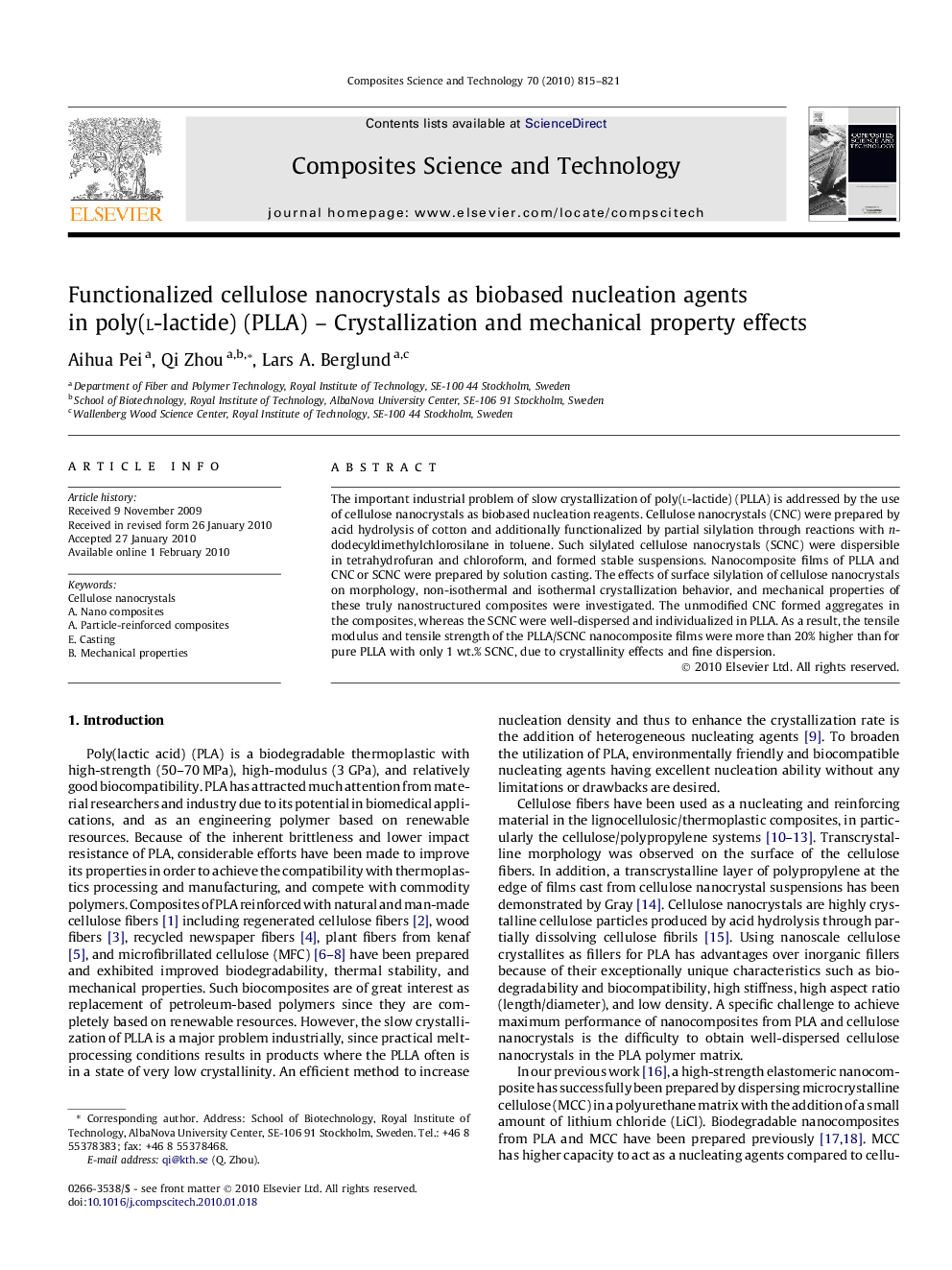| Article ID | Journal | Published Year | Pages | File Type |
|---|---|---|---|---|
| 821428 | Composites Science and Technology | 2010 | 7 Pages |
The important industrial problem of slow crystallization of poly(l-lactide) (PLLA) is addressed by the use of cellulose nanocrystals as biobased nucleation reagents. Cellulose nanocrystals (CNC) were prepared by acid hydrolysis of cotton and additionally functionalized by partial silylation through reactions with n-dodecyldimethylchlorosilane in toluene. Such silylated cellulose nanocrystals (SCNC) were dispersible in tetrahydrofuran and chloroform, and formed stable suspensions. Nanocomposite films of PLLA and CNC or SCNC were prepared by solution casting. The effects of surface silylation of cellulose nanocrystals on morphology, non-isothermal and isothermal crystallization behavior, and mechanical properties of these truly nanostructured composites were investigated. The unmodified CNC formed aggregates in the composites, whereas the SCNC were well-dispersed and individualized in PLLA. As a result, the tensile modulus and tensile strength of the PLLA/SCNC nanocomposite films were more than 20% higher than for pure PLLA with only 1 wt.% SCNC, due to crystallinity effects and fine dispersion.
